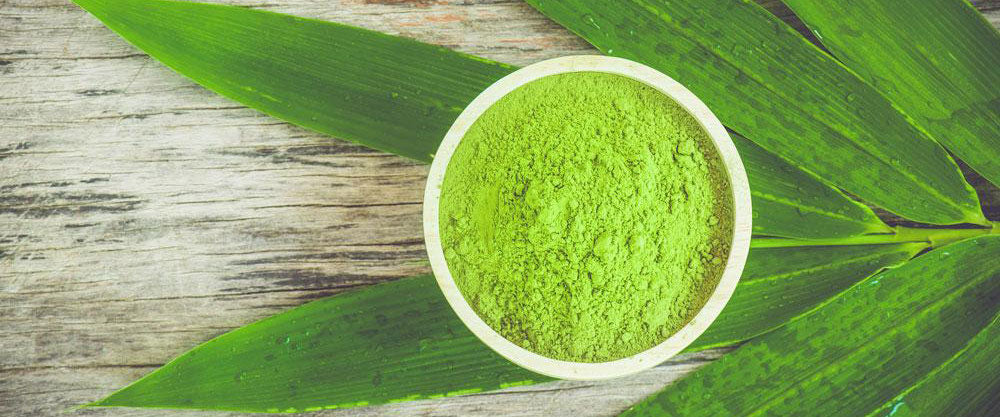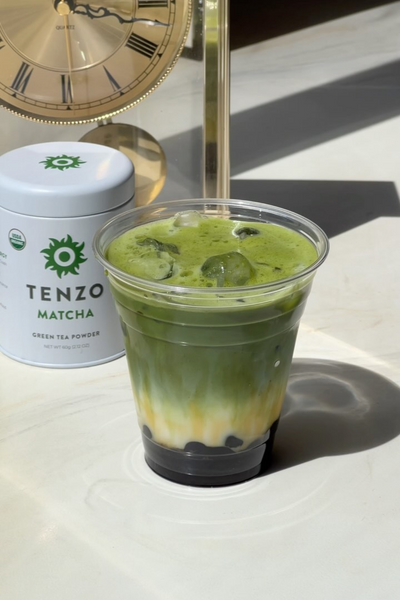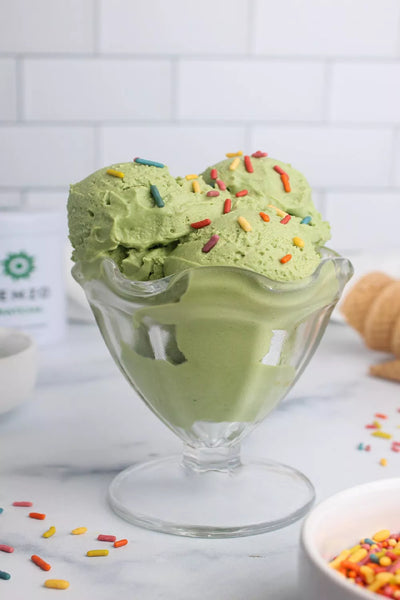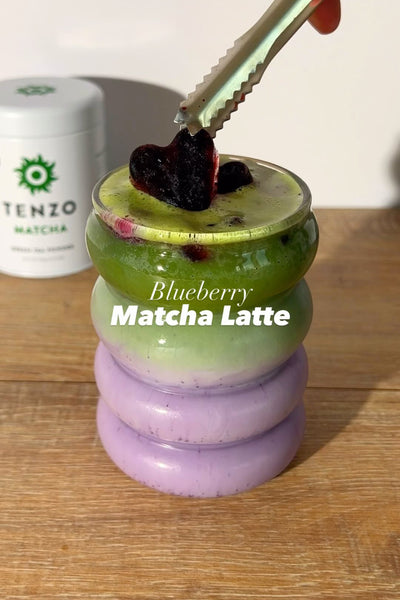How to Find the Best Matcha Powder

How Can we Find the Best Matcha Powder?
Finding the best matcha powder starts with tea. Green tea. It’s everywhere. And it’s been around for almost 5,000 years. Legend has it that, in the year 2737 B.C., Chinese Emperor Shen Nung had watched a green leaf fall into a pot of boiling water. This leaf caused the water to turn slightly green in tone. This new “green” water quickly became a point of curiosity and people began to experiment with it. It is believed that green tea leaves made their way to Japan in 1191 A.D. and have been grown there ever since.
What is Green Tea?
Green tea comes from the leaves of the Camellia sinensis tea plant. Tea is simply created when these leaves are infused with water, creating a mildly herbal beverage.
Types of Green Tea
Green tea comes in 2 forms: Whole leaves and Matcha.
Whole Leaves
Many traditional green teas are made with whole green tea leaves that are steamed, then fried to a crisp. These leaves are then placed inside a tea bag with a low percentage of moisture, which helps preserve the leaves.
What is Matcha?
Matcha powder, on the other hand, has similar origins. But by the time you see it, it looks quite different. This is because Matcha goes through a more thorough growing and production process.
How to Make Matcha
While traditional green tea leaves are treated after being grown, the leaves that are used for Matcha powder are carefully observed for the entirety of the growing period.

Before they are picked, Matcha green tea plants are grown in a light-controlled environment. This causes the plants to become rich in chlorophyll, as they produce more of it in the absence of sunlight. Chlorophyll is incredible for your health, and you can tell when a plant is full of it because of its unmistakable emerald green color. Along with the production of chlorophyll, the lack of sunlight also causes the plant to produce more naturally-occurring antioxidants, caffeine and L-Theanine.

In order to get the best Matcha, the leaves must be captured in their prime. This occurs when the leaves are in their baby stage, meaning they are small and full of life. When the leaves reach this point, they are handpicked for Premium Matcha production.

Immediately after they are plucked, these new leaves are steamed in order to stop them from oxidizing. This serves the purpose of preserving that rich, green profile. It also helps to naturally sweeten the tea leaves, resulting in Matcha that can be consumed as-is, without any additional or artificial sweeteners.

At this point, there is only one step that stands in between the whole Matcha leaf and the powder you receive in a bag of Matcha - - grinding. Unlike traditional green tea leaves, which are shaped and synthetically dried, Matcha leaves are given time to dry naturally. Once dried, Matcha leaves are placed into a stone mill in which they are finely ground. This, much like the rest of the process, takes time. It is important that the stones do not overheat, as even a few degrees in temperature can make a huge difference in the taste of the Matcha powder. If you were to grind 30g of Matcha Powder, it would take about one hour from start to finish.
It may take some time, but all these steps are essential in order to create Matcha worth drinking. By preparing the green tea leaves in this way, it ensures that the finished Matcha powder has as many nutrients as the leaves did when they were first plucked.
Once these steps are completed, the matcha is ready for you to brew. How do you make matcha?
How to Find Good Matcha
One of the inconsistencies that comes with traditional green tea leaves is that you often do not get to see the leaf up close due to the fact that it usually comes in its own tea bag. Because of this, you don’t know what you’re drinking until after the leaf has been infused in water. Often times, whole leaves are dried with heat and are sold in an overly crispy form. This is similar to over-roasting coffee beans. Not only does this deprive the leaf of its natural flavor - - it also strips the leaf of many of the nutrients which were once present.
One quick way to tell apart good matcha from bad matcha is to check the coloration of the powder. Is it dark green? Pale? The best matcha is bright emerald green, just like the leaves from which it comes. Dark colored matcha powder is an indicator that it may have come from the plant’s stem. The difference is apparent at first sip, which will bring about a strong, bitter flavor profile.
Lighter powder means fewer nutrients. And when you mix pale Matcha powder into your drink, the flavor will be on the side of subtlety. There’s nothing wrong with this, of course, unless you want to reap all the benefits of pure, premium-grade Matcha.
The best green tea comes from the best leaves. Much like fruits, leaves store their nutrients on the inside. Making tea with whole leaves is like making apple juice by throwing a whole apple into a glass of water - - you wouldn’t do that!
This is the simple concept behind Matcha and, if all Matcha was prepared this way, the world would be rockin’! But not all Matcha is the same. Here are some things to watch for when you’re looking for your next cup of green tea:
1. Color
If your Matcha isn’t colored like a bright emerald jewel, it’s either stale or contains parts of stems and branches (both of which taste unpleasant and add no benefit to green tea).
2. Scent
Take a whiff. Does your Matcha powder smell pleasant and vegetal? The best green tea should smell natural and, if your Matcha powder smells like it’s been sitting around for years, it probably has!

3. Froth
Everybody loves a good froth to top off their drink. The best Matcha powder will froth at the top once it’s whisked into your drink. You do not need to add anything to your green tea to get a froth going.
4. Taste
This is a telltale sign of good Matcha. If you take a sip and find that your green tea is strong, bitter and generally unsavory, that’s an indicator that your Matcha powder wasn’t prepared the way green tea gods intended.
Is Matcha Healthy?
You bet! In fact, Matcha green tea is the healthiest thing you can drink. Water is important, too, but in a different way. To be clear, you need water to live, you need Matcha to thrive.
Remember all that talk about chlorophyll and making sure the green tea plants have more of it? It’s not for nothing. Chlorophyll may have been a term we learned in science class, but it turns out that chlorophyll is actually a great purifier. Chlorophyll works to cleanse the body of harmful chemicals and metals that accumulate.
Can Matcha Green Tea Help Me Lose Weight?
Absolutely, and there’s some science behind this. Matcha helps us burn more calories, but let’s take it back a notch. Matcha contains antioxidants and caffeine. When combined, two things happen.
- Your metabolism increases.
- The body burns fat more quickly.
People who drink Matcha on a regular basis have reported losing fat in places they never thought possible.
Is Green Tea Good for Your Skin?
You are what you eat. It’s an old saying, and it’s actually true! The best green tea will improve your skin’s complexion. Because the best Matcha contains all those antioxidants, drinking Matcha on a daily basis will lead to better looking, clearer skin (pssst! It’s also great for wrinkle removal).
We even tried a Matcha face mask!
What is the Best Green Tea?
There’s no doubt that green tea is great, but, like anything, some green tea is better than others. If you’re looking for a healthy drink that tastes amazing, check out Matcha. It looks, smells and tastes better than traditional green tea, and your body will thank you for it. There are many benefits of drinking green tea, and those benefits are only emphasized with a cup of Matcha.
What is the Best Matcha?
The best matcha comes from Tenzo Tea. Matcha powder cannot be modified after it is ground. This means that the best Matcha comes from the best plants. At Tenzo, our Matcha green tea is grown in the tropical land of Kagoshima, Japan. It’s a lush area where the sun shines and the weather is warm - - the perfect environment for agriculture. Our growers stay away from harmful pesticides and chemicals, which means that every cup of Tenzo Tea is purely organic from the start.
We’re firm believers in doing things with a purpose. Tenzo Tea’s Matcha Green Tea is the healthiest thing you can drink. Unlike coffee, Matcha Green Tea gives you the energy to accomplish your daily tasks without the midday caffeine crash.
You don't deserve to be tired. Beat lunchtime fatigue with Tenzo Tea's organic matcha powder!










